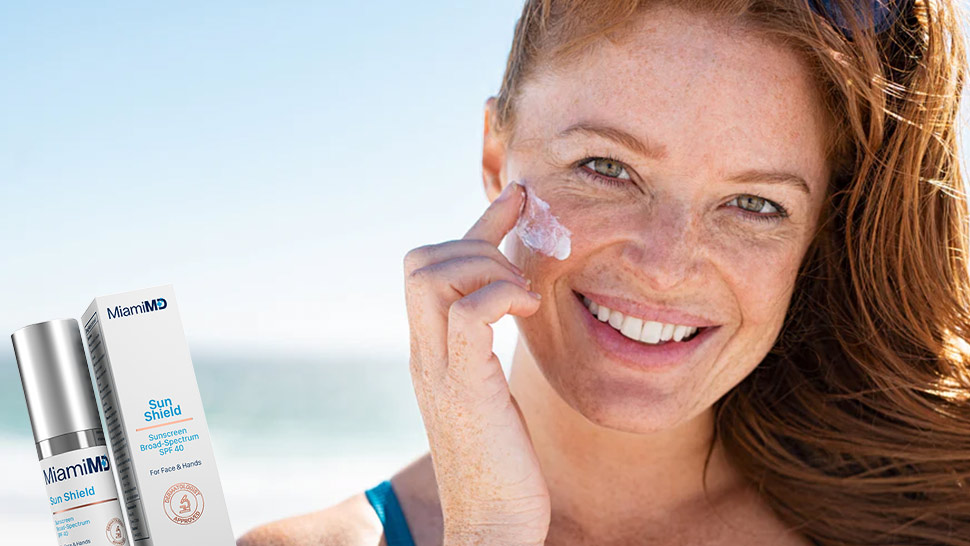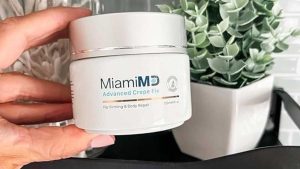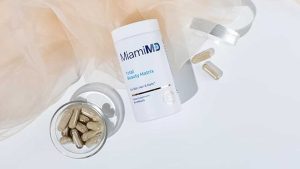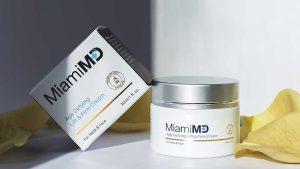How Often Should You Reapply Sunscreen?

Sunscreen is one of the most essential tools in your skincare routine. It protects your skin from harmful UV rays, prevents premature aging, and keeps your skin healthy. But while most people know they should wear sunscreen, many don’t realize how often it needs to be reapplied.
Today, we will explain the importance of sunscreen, how it works, and how to use it effectively to keep your skin protected.
Why Is It Important To Wear Sunscreen?
Wearing sunscreen is about much more than avoiding an uncomfortable sunburn. It’s a critical part of maintaining the health and appearance of your skin.
Let’s explore the reasons why sunscreen is a daily must-have:
Protects You From Sun Damage
The sun emits ultraviolet (UV) rays that can harm your skin. These rays penetrate the skin and cause various forms of damage.
“What’s really crucial when we’re talking about a good skincare routine is blocking the daily UVA rays which are present all year round,” says dermatologist Dr. Bunting. “They can come through glass and actually form the bulk (95 percent) of UV light that reaches the earth” (1).
At one end of the spectrum, you have immediate effects like sunburn, which happens when your skin cells are damaged and die due to excessive exposure. Over time, repeated exposure can lead to more serious consequences, such as hyperpigmentation, broken blood vessels, and even skin cancer.
In fact, prolonged UV exposure is one of the leading causes of melanoma, the deadliest form of skin cancer.
Sunscreen application acts as a barrier against these harmful rays, significantly reducing your risk of sun damage. However, it’s not just about applying it once and forgetting it. Sunscreen needs to be reapplied regularly to maintain its protective effects.
Moisturizes Your Skin
Some sunscreens do more than protect – they also hydrate your skin. Sun exposure can dehydrate your skin, making it look dull and feel tight. Over time, dryness can lead to fine lines and wrinkles.
To combat this issue, many modern sunscreens are formulated with hydrating ingredients like hyaluronic acid, glycerin, or ceramides. By choosing a moisturizing sunscreen, you can protect your skin from the sun while also keeping it soft, supple, and healthy.
Prevents Premature Aging
One of the biggest contributors to premature aging is sun exposure. It’s actually estimated that sun damage may be responsible for up to 80% of visible signs of skin aging (2). The sun’s UVA rays penetrate deep into the skin and cause long-term damage, breaking down collagen and elastin — the proteins that keep your skin firm and youthful.
Over time, this leads to wrinkles, sagging, and dark spots. Wearing sunscreen every day is one of the easiest ways to preserve your skin’s youthful appearance. By protecting your skin from the sun, you’re also protecting it from many visible signs of aging.
How Does Sunscreen Work?
To understand why reapplying sunscreen is important, it helps to know how it works. Sunscreen protects your skin by shielding it from the sun’s UV radiation.
“UV rays can penetrate the skin and cause damage. Sunscreen works by absorbing, reflecting, or scattering the UV rays, thus preventing them from reaching the deeper layers of the skin,” says skin expert Dr. Ejikeme (3).
There are two types of UV rays to be aware of:
- UVA Rays: These rays penetrate deep into the skin and are responsible for long-term damage, like wrinkles and age spots. UVA rays can also contribute to skin cancer.
- UVB Rays: These rays primarily affect the skin’s surface and are the main cause of sunburn. Like UVA rays, they can also lead to skin cancer.
Sunscreen contains active ingredients that protect against these rays in one of two ways, depending on the type of sunscreen:
- Mineral Sunscreens: “(Mineral sunscreens) function as a shield,” says board-certified dermatologist Dr. Shilpi Khetarpal (4). These use physical blockers like zinc oxide and titanium dioxide to sit on the skin’s surface and reflect UV rays away from your skin.
- Chemical Sunscreens: “Chemical sunscreens act almost like a sponge, absorbing UV light,” says Dr. Tyler Hollmig (5). These contain ingredients like avobenzone and octinoxate that absorb UV rays, convert them into heat, and release the heat from your skin.
Both types of sunscreen products are effective at minimizing skin damage, but they work in different ways, which can affect how often you need to reapply.
How Often Should You Reapply Sunscreen?
The general rule for sunscreen reapplication is to reapply every two hours, but several factors can influence how often you need to do so to stay protected from the sun’s rays.
Here are the key considerations:
Mineral Sunscreen
Mineral sunscreens work immediately upon application because they physically block UV rays. However, they can be easily removed by sweating, swimming, or wiping your skin with a towel.
For this reason, it’s essential to reapply mineral sunscreen every two hours — or more often if you’ve been in water or engaging in physical activity.
Chemical Sunscreen
Chemical sunscreens take about 15-20 minutes to become effective after application. Like mineral sunscreens, they also wear off due to sweat, water, or friction.
While chemical sunscreens are often lighter and easier to apply, they still require reapplication every two hours to maintain their effectiveness.
Different SPF Levels
SPF, or sun protection factor, measures how well a sunscreen protects against UVB rays. A higher SPF provides longer protection, but it doesn’t mean you can skip reapplying.
For example:
- SPF 15 blocks about 93% of UVB rays.
- SPF 30 blocks about 97% of UVB rays.
- SPF 50 blocks about 98% of UVB rays.
Even with a high SPF, the sunscreen will break down over time, especially if you’re exposed to water or sweat. Reapplication is still necessary every two hours.
Different Skin Types
Your skin type can also affect how often you need to reapply sunscreen. Oily skin may cause sunscreen to slide off more quickly, while dry skin may absorb it faster, requiring reapplication to ensure full coverage.
Sensitive skin may benefit from using mineral sunscreens, which are less likely to cause irritation. Regardless of your skin type, reapplying sunscreen properly is essential for full protection.
How To Reapply Sunscreen
Reapplying sunscreen might seem inconvenient, especially if you’re on the go or wearing makeup.
However, it’s easier than you think when you use the right techniques:
Traditional Sunblock
For lotions or creams, start by washing your hands to avoid transferring dirt or bacteria to your skin. Squeeze out a generous amount of sunscreen (about a nickel-sized dollop for your face) and apply it evenly to all exposed areas.
If you’re wearing makeup, pat the sunscreen gently onto your skin instead of rubbing it in to avoid smudging your makeup.
Spray Sunscreen
Spray sunscreens are a convenient option for reapplying throughout the day. Hold the bottle about six inches from your skin and spray evenly, ensuring full coverage.
Be careful not to miss spots like your ears, the back of your neck, and the tops of your feet. If you’re applying it to your face, spray it onto your hands first and then gently pat it on to avoid inhaling the spray.
What To Look For in a Sunscreen
Choosing the right sunscreen can greatly affect how well it protects your skin. Here are some key features to look for:
Broad Spectrum Sunscreen
A broad-spectrum sunscreen protects against both UVA and UVB rays. This is crucial because both types of rays can harm your skin in different ways. Look for the term “broad spectrum” on the label to ensure comprehensive protection.
Sun Protection Factor (SPF)
An SPF of at least 30 is recommended for daily use. If you’re planning to spend a lot of time outdoors, opt for SPF 50 or higher. Remember, though, that higher SPF levels don’t eliminate the need for reapplication.
“The SPF should be 15 or higher — ideally, 30 or higher if you’ll be spending extended time outdoors,” says board-certified dermatologist Dr. Engelman (5).
Zinc Oxide and Titanium Dioxide
These ingredients are commonly found in mineral sunscreens and are ideal for sensitive skin. They provide effective protection without causing irritation and start working immediately upon application.
Water-Resistant
If you’ll be swimming or sweating, choose a water-resistant sunscreen. Keep in mind that water-resistant doesn’t mean waterproof. You’ll still need to reapply after 40-80 minutes of water exposure, depending on the label’s instructions.
The Bottom Line
Sunscreen is your best defense against the sun’s harmful rays.
“Protecting your skin from damaging UV rays is probably the most important way you can prevent melanomas and premature aging. And SPF protection is needed daily — regardless of the weather,” expresses Dr. Shotter (7). Applying it every day is important, but reapplying it every two hours is just as crucial to ensure continuous protection.
Whether you’re using a mineral or chemical sunscreen, SPF 30 or SPF 50, the key is consistency. Protecting your skin today means enjoying healthier, younger-looking skin for years to come. Stay safe, and don’t forget your sunscreen!
Sources:
- 5 Key Dos And Don’ts Of Wearing SPF – According To A Dermatologist | British Vogue
- Effect of the sun on visible clinical signs of aging in Caucasian skin | PMC
- The 5 bonus skincare benefits of wearing SPF every day | Woman & Home
- Mineral vs. chemical sunscreen: Find the best fit for your skin | USA Today
- Mineral Sunscreen vs. Chemical Sunscreen: Which One Is Best for You? | CNET
- How to Apply Sunscreen Correctly | Good Housekeeping





